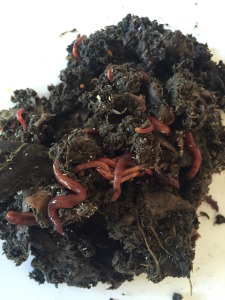During the winter months, your landscape and garden aren’t quite as demanding as they usually are. If you aren’t already composting, this is a great time to set up an area and system that will reap benefits for years to come.
Composting is the key to organic gardening. Whether you are gardening in the ground, in pots, in raised beds or a combination, there truly is nothing better you can give your plants than homemade compost. Not only does it add necessary nutrients, help retain moisture and loosen up our hard-packed clay soil, it also helps reduce air and water pollution, and saves you money.
Compost is created when organic materials — plants, leaves, twigs, food waste, coffee grounds — are broken down into nutrient-rich natural fertilizer. The plant material that gets sent to landfills and not composting area, is stacked into large, dense piles where they are not exposed to light, oxygen and decomposing organisms. Often the materials set untouched for many years, releasing methane gases into the air, adding to global warming.
Keeping green waste out of the landfill is a priority, and the more compost you make, the less commercial fertilizer you need to buy. The use of chemical fertilizers also contributes to the pollution of our watersheds when they run off through rain or sprinklers and into the storm drains.
Right now you should have an ample supply of falling leaves from your trees, the spent plants from your summer vegetable gardens and plants from the general cleanup of your yard.
To create a conventional compost bin, you need an area of about 3-feet squared. If you want to create compost as quickly as possible — approximately five to eight weeks — practice a method known as hot composting, which involves layering two parts brown materials (dried leaves, pine needles, chopped twigs, shredded paper) to one part green material (grass clippings, kitchen waste, fresh plant clippings). Keep your pile moist, but not wet, and turn it on a regular basis. The internal temperature should reach 120 to 140 degrees.
Cool composting requires less math. You basically add materials when you have them and don’t worry about it much. The materials eventually will decompose, although it usually takes about six months.
Vermicomposting — my personal favorite — is a very efficient form of composting kitchen scraps. A pound of special compost worms, called red wigglers, can eat about a half pound of food every day.

Worm composting requires a bin — you can make your own or buy one of the many multi-tiered stacking varieties — along with the worms, shredded paper and some kitchen waste. Avoid meats, citrus and oils. Protect the bin from extreme heat or cold. The garage is a perfect place to set up your bin; it doesn’t smell and is very convenient for taking out those kitchen scrapes on a regular basis.
Let your worms get acclimated to their new environment for a couple of days before you start feeding them. Put a layer of moist shredded paper in the bin, add the worms and cover them with more paper. The worms will eat the food and produce a rich fertilizer known as worm castings, which can be harvested in a few months.
No matter which way you decide to compost, it is a practice that will turn you into a better and more conscientious gardener.

 Being an avid gardener, born and raised in Indiana, I feel incredible blessed to live in sunny California & be able to grow my own food all year-round! I write a monthly garden column for the San Jose Mercury News & am constantly striving for tips & ideas on how to live a little more gently in regards to ourselves, our planet & each other – basically sustainability we can live with! As a
Being an avid gardener, born and raised in Indiana, I feel incredible blessed to live in sunny California & be able to grow my own food all year-round! I write a monthly garden column for the San Jose Mercury News & am constantly striving for tips & ideas on how to live a little more gently in regards to ourselves, our planet & each other – basically sustainability we can live with! As a 



